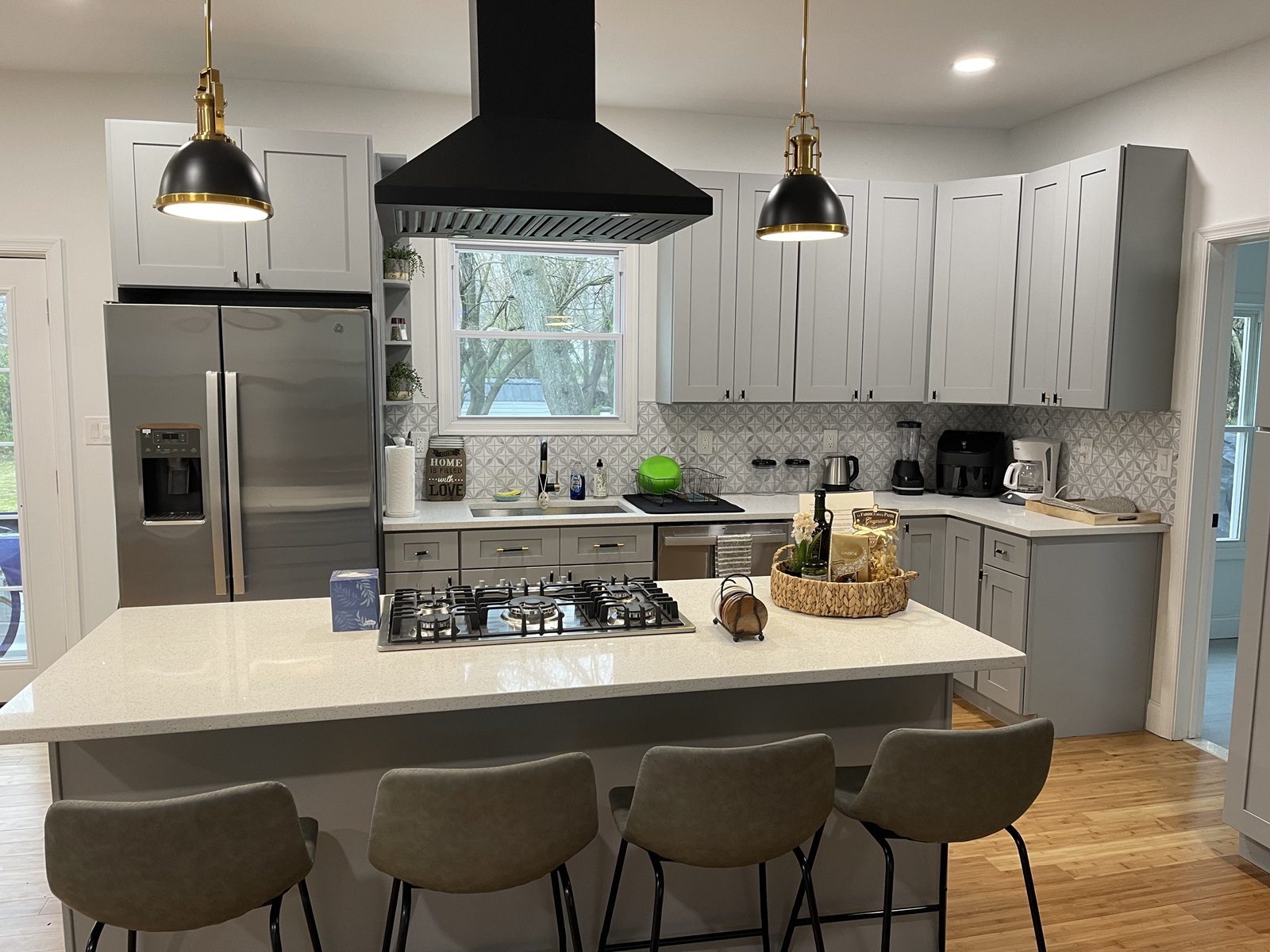Remodeling a bathroom is more than just a cosmetic update; it’s an investment in comfort, functionality, and property value. In metropolitan areas like Washington DC and the greater DMV region, homeowners have become increasingly selective about who they trust to carry out this crucial home improvement. With so many options available, it’s essential to know how to find the right professionals who can deliver both style and substance. For many, turning to DMV Bathroom remodeling experts Washington DC ensures access to experienced specialists who understand local housing trends, codes, and expectations.
This guide will walk you through everything you need to know before hiring, from evaluating contractor experience and design vision to understanding contracts and timelines.
Understanding the Importance of a Professional Remodel
Bathrooms may be smaller than kitchens or living rooms, but they involve just as many moving parts. Plumbing, electrical, tiling, and ventilation systems must all work harmoniously to create a space that’s both beautiful and functional. Hiring seasoned professionals ensures each component is handled correctly the first time, saving you time, money, and stress in the long run.
Why It Matters:
- Proper waterproofing prevents long-term structural damage.
- Updated designs improve resale value and daily functionality.
- Energy-efficient fixtures lower utility bills.
- High-quality finishes withstand humidity and wear.
Professional remodelers not only bring technical expertise but also guide you through the design process to match your aesthetic preferences and practical needs.
Step 1: Start with Research
Before reaching out to contractors, it’s essential to do your homework. Look for remodelers who specialize in bathroom upgrades within the Washington DC and DMV area. These professionals are more likely to understand local design trends, permitting requirements, and the expectations of area homeowners.
Tips for Your Research:
- Browse review sites like Houzz, Yelp, and Google.
- Look at before-and-after galleries on company websites.
- Ask neighbors or local community groups for referrals.
- Check contractor licenses and insurance through local authorities.
A well-reviewed contractor with a strong online presence is often a good indication of reliability and customer satisfaction.
Step 2: Interview Multiple Contractors
Never settle on the first contractor you speak with. Interview at least three to compare approaches, pricing, and personalities. You’ll be working closely with this team for several weeks or months, so trust and communication are vital.
Questions to Ask:
- How many similar projects have you completed recently?
- Do you offer design consultation or work with interior designers?
- What is your estimated timeline for completion?
- Can you provide recent references?
- How do you handle change orders or unexpected costs?
Assessing their professionalism and willingness to answer questions helps you determine their reliability and communication style.
Step 3: Evaluate Portfolios and Style Compatibility
Every contractor has a unique design style or area of specialty. While some may focus on sleek, modern aesthetics, others might excel at restoring vintage charm. Reviewing portfolios helps ensure their capabilities match your vision.
Look for:
- Consistent quality in tiling, cabinetry, and fixture installation.
- Diversity in design—can they handle both traditional and modern requests?
- Attention to small details like grout lines, mirror alignment, and hardware choice.
This step gives insight into how well they’ll execute your ideal look.
Step 4: Understand the Scope and Proposal
Once you’ve narrowed down your choices, request detailed proposals from each candidate. These should include a breakdown of labor, materials, timelines, and contingencies.
A comprehensive proposal will outline:
- Demolition plans
- Plumbing and electrical modifications
- Cabinetry, countertops, and hardware
- Tiling and flooring
- Ventilation and lighting
- Painting and final clean-up
Avoid vague estimates. A detailed scope shows professionalism and ensures both parties are aligned on expectations.
Step 5: Check Licensing, Insurance, and Warranties
Ensuring your remodeler is properly licensed and insured isn’t just a formality—it protects your investment. In Washington DC, certain permits may be required, especially if plumbing or electrical systems are being modified.
Ask for proof of:
- General contractor license (valid for DC or applicable state)
- Liability insurance
- Workers’ compensation coverage
- Warranty terms on labor and materials
Reputable remodelers will happily provide this information and clearly explain what’s covered post-completion.
Step 6: Consider Timeline and Availability
Bathroom renovations can take anywhere from 2 to 8 weeks depending on the scope. A good contractor will give you a realistic timeline and honor it. While delays can happen (due to materials or permit approvals), transparency is key.
Be cautious of contractors who:
- Promise to start “immediately” with no planning phase.
- Refuse to commit to a written schedule.
- Offer unusually short or vague timeframes.
Also, consider if they’ll work on your job exclusively or juggle multiple projects at once.
Step 7: Communication Is Key
The best remodelers are those who maintain strong communication from start to finish. You’ll want a team that updates you regularly, checks in on your preferences, and is responsive when questions arise.
Look for:
- A dedicated project manager or point of contact.
- Regular progress reports (weekly or bi-weekly).
- Digital or in-person walkthroughs.
- Easy access to design or material change requests.
Good communication prevents misunderstandings and ensures the final result reflects your expectations.
Step 8: Watch Out for Red Flags
Not all contractors operate with integrity. Some warning signs include:
- Requests for large deposits upfront (more than 30%)
- No written contract or vague terms
- Reluctance to show proof of insurance or licensing
- High-pressure sales tactics or “limited-time” discounts
- Negative reviews that mention similar issues
Trust your instincts. If something feels off during the consultation phase, it may be best to keep looking.
Step 9: Review the Contract Carefully
Before signing anything, go through the contract line by line. A well-drafted agreement should outline every element of the remodel.
Key sections should include:
- Payment schedules
- Project milestones
- Change order procedures
- Warranty coverage
- Termination clause
Never rely on verbal promises. Get everything in writing to protect both yourself and the contractor.
Step 10: Stay Involved During Construction
Once work begins, your involvement doesn’t end. Regularly inspecting progress, asking questions, and approving decisions keeps the project on track. Don’t be afraid to voice concerns early—it’s easier to fix a minor issue than a major mistake later.
Maintain open lines of communication and stick to the agreed-upon design unless changes are necessary.
Bonus Tip: Add Value with Modern Features
Consider incorporating upgrades that will add long-term value to your home:
- Energy-efficient fixtures
- Radiant floor heating
- Walk-in showers with frameless glass
- Motion-sensor lighting
- Floating vanities with storage
Working with experienced remodelers can help identify the right features that balance design, functionality, and resale value.
Conclusion
Choosing the right team for your renovation requires patience, research, and clear communication. However, the results—a beautiful, functional bathroom that enhances your daily routine and increases home value—are well worth the effort. Whether you’re remodeling a powder room or a master en suite, trusting experienced DMV Bathroom remodeling experts Washington DC ensures you’re working with professionals who understand the needs of local homeowners and deliver results that exceed expectations.

